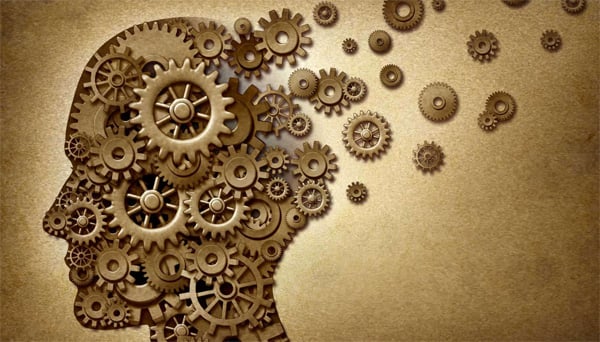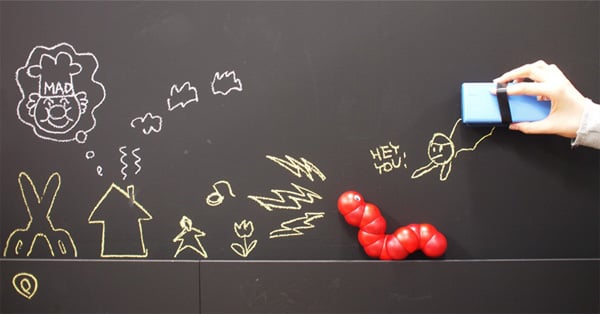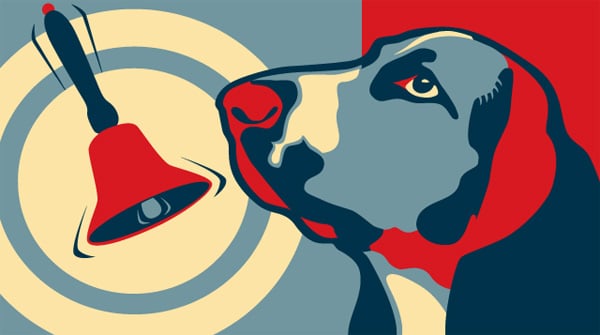Three Levels of Web Design on the Edge of Psychology
This article is what we think will be very good and valuable for web designers who regularly interact with clients and understand the importance of being good at what they are doing. There are hundreds of tactics you may apply for a new project but you need to find out one working great for the client.
Here we offer you to figure out 3 levels of web design that probably differ from those you learned in colleges or discussed with friends while drinking beer.
1. Visceral Design
If you were good at college classes you may remember that the word ‘visceral’ relates to ental body structure. At first sight it seems that there is nothing in common with web design… but it is.
We’re dependent on our visceral reactions when deciding whether something is good or bad for us. Thus when seeing a cute kitten on a screen most people will melt with that and the whole design will seem better. Frankly speaking, our brain reaction is much quicker than we used to think and emotional reaction appears on the fly, even before we start thinking about thinking.
This principle will work the same with all emotional triggers. There are just a few of them to show you what we’re talking about.
- Clean layout is always associated with safe environment. That’s why ecological organizations, medical clinics and science laboratories prefer to use designs with a lot of white space and clear color scheme.
- ‘Sex sells’ technique is well known and widely spread in offline and online advertising. Reproductive opportunities motivate people for actions from the times of primitive society and they still work. Semidressed bodies and provocative slogans excite our imagination and stimulate to desire a thing (mineral water, perfumes, a sandwich or an account on new site).
- Gaining opportunity symbols are also great triggers for strong leaders and people with a lack of self-confidence. For them it’s a chance to grow without significant efforts and money spending.
- Things that are associated with yummy food (photos, gentle hints). Feeding is one of the basic human survival needs that were proposed within Maslow’s hierarchy of needs in 1943. As you know, nothing has been changed from that time.
This list can be never ending because it’s all about things build into human bodies by nature. Generally people all over the world confirm the rule that attractive things really do work better. Apple proved it when putting colorful iMac on the market – it looked really awesome and everybody believed that it’s better than previous versions. In fact there were made a few minor changes of software and hardware.
The conception of visceral design is usual for graphic or packaging design, however, web design should also take it into account. When applying rules of visceral design it’s easy to create really awesome projects appreciated by people of different ages, nationalities, religions and even times. Trouble yourself to think why so old brands as Chanele or Dolce and Gabbana are so popular year after year. They are visceral! Your body knows them even if you’ve never had a chance to buy brandy things.
2. Behavioral Design
Behavioral design solutions are more usual for web professionals than tricky visceral design methods. It is all about usability and functionality. Behavior-oriented designers won’t care about appearance because the way people use their website defines whether it is good or bad.
This type of design can’t be created as quickly as the previous one. It needs long-time observation and thinking on how to improve a process. You can’t ask site visitor what they would like to see on your pages because most likely they don’t know the answer. At first clients need to see what you created for them and then evaluate it.
Let’s define important components of behavioral design, so that you can better understand it.
- Functionality. Behavioral web designers are strongly concentrated on projects features. Every button and menu tab have to work in accordance with their expectations.
- Usability. Useful features like multilevel menus are not always usable. It can be hard to deal with them and it becomes a barrier for lazy web surfers. Yes, most of us are lazy, there is noting to do with it.
- Understandability. Whatever good services you provide if your website navigation is hard to understand potential clients won’t appreciate it.
- Physical feel. This component can hardly be referred to the online world, it’s more common for real design where materials, size and weight do matter. However, people are rather intuitive and the idea of comfort is significant online as well as offline.
There are two relatively common ways to rich these principles – it’s innovation and enhancement. When being innovative you’ll get no hints from the auditory or elsewhere. When Apple created IOS7 its minimalist flat style with long shadow elements was a true innovation and numerous sites on the web started to apply it. Enhancements usually come when there is a definite problem without a solution. Building a custom shopping cart to match your clients requirements is a good example of that.
A good final stage of behavioral web design can be A/B testing of a product or site. When getting clients feedback you’ll be able to know many interesting and unexpected things about the website.
3. Reflective Design
Have you ever thought why some world-known brands may choose different colors for the same product sold in different countries? They know how cultural and religious differences can influence their business. Thus in USA red is considered to be a color of love, in China – a good luck color, in Greece – a dominating male color and in South Africa – a color of mourning. This peculiarity have to be taken into account when opening new foreign markets.
Have you heard about the latest scandal over World Cum-themed beer bottles by Gaffel Koelsch? Iranian government protests against the use of their national flag on special bottles of beer. All countries that participate in the World Cup 2014 are presented there but Iran feels abused. Islamic laws prohibit to drink alcohol and their flag on bottles of beer is interpreted as insult. This story is not about web design but you have to predict different versions to avoid the worst of them.
Thus reflective design depends on hundreds of things like customers cultural and religious preferences, past experience, personal believes, etc. This kind of design is not mass, it needs a good understanding of the target audience. In this case websites and apps reflect people’s attitude to digital sphere. There were times when web users were crazy about skeumorphism but now they prefer simple flat style. Many websites were re-designed to match this new trend.
There are a few tips to help you create better reflective web designs:
- Provide users with some freedom of understanding your site. You never know what’s in people’s heads, so let them think up small details.
- Try to involve users. When people see your site for the first time they may feel lost just because it is something new for them. Make them feel more comfortable by applying gamification techniques like eye-catchy guide, badges, etc. If you sell non-material goods you can provide their free demo versions.
- Communicate with users within website interface. There are many ways to stimulate people to express their opinions. When being involved into communication process most users will be more favourable to the site and services it provides.
- Be careful when applying off-site researches. Even when being made by authoritative analytics of your industry they may not suit your audience. Weight the pros and cons before improving your own site or product.
Conclusion
All the three levels of web design are important and effective, so you can combine them into your own design. As familiarization of the web grows and it moves into all aspects of our lives, users become more sophisticated and developers with designers need to find out new ways to engage them into communication or buying process. The current levels of design seem to be good enough to suit the increasing demand.





